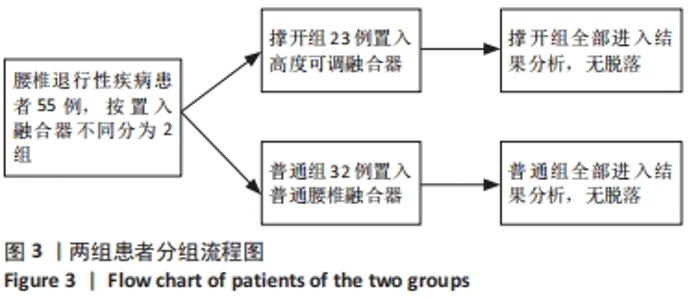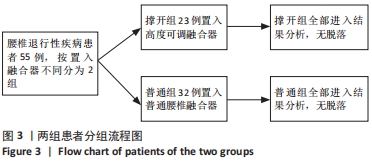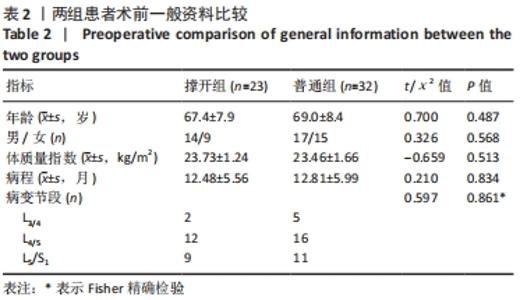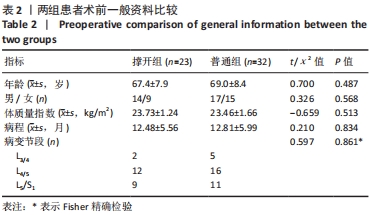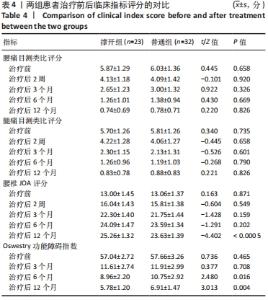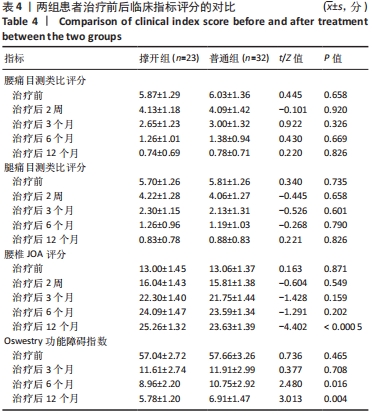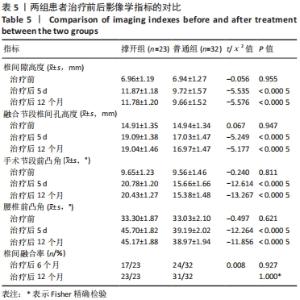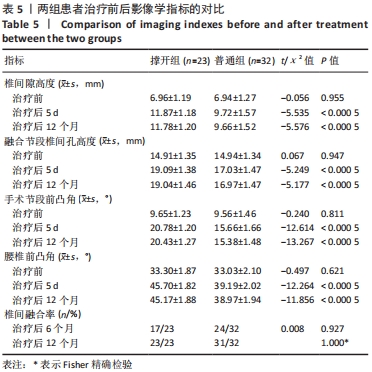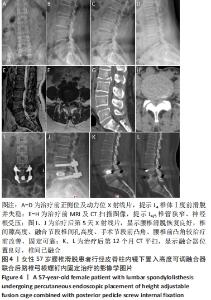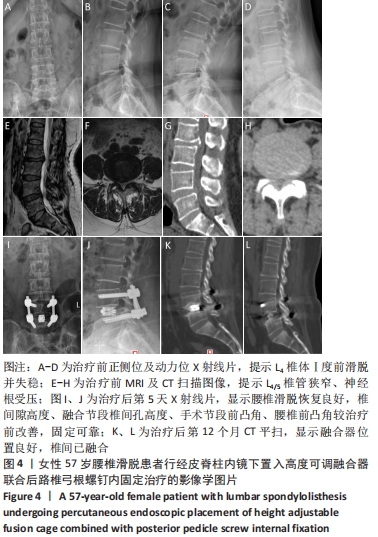[1] 钟远鸣,付拴虎,李智斐,等.单双侧椎弓根螺钉内固定并后路腰椎体间融合修复腰椎退行性疾病的系统评价[J].中国组织工程研究,2016,20(9):1353-1360.
[2] OLIVEIRA L, MARCHI L, COUTINHO E, et al. A Radiographic Assessment of the Ability of the Extreme Lateral Interbody Fusion Procedure to Indirectly Decompress the Neural Elements. Spine (Phila Pa 1976). 2010;35(26 Suppl):S331-337.
[3] RAVINDRA VM, SENGLAUB SS, RATTANI A, et al. Degenerative Lumbar Spine Disease: Estimating Global Incidence and Worldwide Volume. Global Spine J. 2018;8(8):784-794.
[4] CHOI KC, KIM JS, RYU KS, et al. Percutaneous Endoscopic Lumbar Discectomy for L5-S1 Disc Herniation: Transforaminal versus Interlaminar Approach. Pain Physician. 2013;16(6):547-556.
[5] 徐红艳,武星,孙秀明,等.椎间孔镜在腰椎间盘突出症等疾病治疗中的应用[J].中国疼痛医学杂志,2017,23(3):215-217.
[6] 刘镠,李莹,吴从俊,等.经皮内镜下腰椎间融合技术研究进展[J].中国中医骨伤科杂志,2019,27(11):85-88.
[7] TAKAHITO F, SHINYA O, MOTOKI I, et al. Validity of the Japanese Orthopaedic Association scoring system based on patient-reported improvement after posterior lumbar interbody fusion. Spine J. 2016; 16(6):728-736.
[8] CONSTANT CR, MURLEY AH. A clinical method of functional assessment of the shoulder. Clin Orthop Relat Res. 1987;(214):160-164.
[9] SHEAHAN PJ, NELSON-WONG EJ, FISCHER SL. A review of culturally adapted versions of the Oswestry Disability Index: the adaptation process, construct validity, test-retest reliability and internal consistency. Disabil Rehabil. 2015;37(25):2367-2374.
[10] BRANTIGAN J, STEFFEE A, LEWIS M, et al. Lumbar interbody fusion using the Brantigan I/F Cage for posterior lumbar interbody fusion and the variable pedicle screw placement system - Two-year results from a Food and Drug Administration Investigational Device Exemption Clinical Trial. (Phila Pa 1976). 2000;25(11):1437-1446.
[11] 唐永超,梁德,陈博来,等.骨水泥钉道强化与否治疗伴骨质疏松的单节段腰椎退行性疾病的临床对照研究[J].中国脊柱脊髓杂志, 2017,27(12):1092-1098.
[12] 汪翔,卜星平,吴小涛.微创单侧入路双侧减压固定与开放双侧减压固定治疗单间隙腰椎管狭窄症的疗效比较[J].临床外科杂志,2018,26(12):951-954.
[13] RUSHTON A, ZOULAS K, POWELL A, et al. Physical prognostic factors predicting outcome following lumbar discectomy surgery: systematic review and narrative synthesis. BMC Musculoskelet Disord. 2018;19(1):326.
[14] 丁一,海涌,杨晋才,等.Pango可撑开椎间融合器联合微创螺钉内固定系统治疗退变性腰椎管狭窄症初步探讨[J].实用医学杂志,2020,36(6):808-812.
[15] GEPSTEIN R, WERNER D, SHABAT S, et al. Percutaneous posterior lumbar interbody fusion using the B-Twin expandable spinal spacer. Minim Invasive Neurosurg. 2005;48(6):330-333.
[16] ZHANG X, WANG Y, XIAO S, et al. Preliminary clinical results of endoscopic discectomy followed by interbody fusion using B-Twin expandable spinal spacer. Zhongguo Xiu Fu Chong Jian Wai Ke Za Zhi. 2011;25(10):1153-1157.
[17] XIAO L, XIONG D, ZHANG Q, et al. Percutaneous posterior-lateral lumbar interbody fusion for degenerative disc disease using a B-Twin expandable spinal spacer. Eur Spine J. 2010;19(2):325330.
[18] GREENAWAY RL, SANTOLINI V, PULIDO A, et al. From Concept to Crystals via Prediction: Multi-Component Organic Cage Pots by Social Self-Sorting. Angew Chem Int Ed Engl. 2019;58(45):16275-16281.
[19] MOUR M, DAS D, WINKLER T, et al. Advances in Porous Biomaterials for Dental and Orthopaedic Applications. Materials. 2010;3(5): 2947-2974.
[20] 卢祺,于滨生.脊柱内植物的3D打印技术研究进展[J].中国修复重建外科杂志,2016,30(9):1160-1165.
[21] CHANG HS. Influence of Lumbar Lordosis on the Outcome of Decompression Surgery for Lumbar Canal Stenosis. World Neurosurg. 2018;109:E684-E690.
[22] KAMALANATHAN V, KIEFFER WKM, ZHU M, et al. Lordosis Recreation With PLIF Surgery-What Is the Influence on Adjacent Segment Lordosis? An Observational Study of Radiological Alignment Change. Spine(Phila Pa 1976). 2020;45(17):1178-1184.
[23] MURATA K, ENDO K, AIHARA T, et al. The impact of sagittal imbalance on walking in patients with lumbar spinal canal stenosis. J Orthop Surg (Hong Kong). 2021;29(2):23094990211010522.
[24] LEE CH, CHUNG CK, JANG JS, et al. Effectiveness of deformity-correction surgery for primary degenerative sagittal imbalance: a meta-analysis. J Neurosurg Spine. 2017;27(5):540-551.
[25] MATSUMOTO T, OKUDA S, MAENO T, et al. Spinopelvic sagittal imbalance as a risk factor for adjacent-segment disease after single-segment posterior lumbar interbody fusion. J Neurosurg Spine. 2017;26(4):435-440.
|
